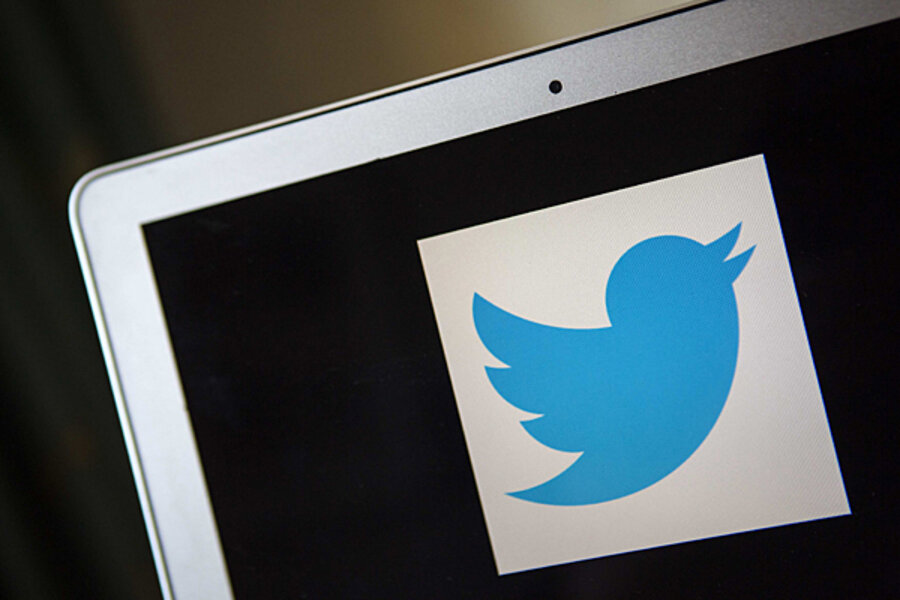Twitter rolls out 'buy' button. Is shopping the new social media?
Loading...
In the latest push to turn social media networks into platforms for e-commerce, Twitter is testing a feature that will let users buy items directly from tweets, according to a report in Bloomberg.
Twitter commerce head Nathan Hubbard says the company is working with Internet payments company Stripe so users can store credit card information online to easily make purchases. This announcement follows Twitter's July acquisition of the mobile payment start-up CardSpring, which Twitter said at the time would help pave the way for "in-the-moment commerce experiences" for users.
In the effort to revamp its revenue streams after coming under investor scrutiny for slow growth, Twitter says it is in the testing phase of its new purchasing service, determined to take a note from companies that have started delivering products to consumers in near instantaneous fashion such as online retail giants eBay and Amazon, Bloomberg reports.
"We want to be a bridge between a consumer wanting something and getting it," Mr. Hubbard told Bloomberg. "Conversations are happening every second on Twitter with artists and charities and consumers, and many of those conversations are leading to transactions already."
In an illustration of why Twitter is feeling pressure to add new sources of revenue, Twitter revealed in July that 30 million of its 271 million monthly active users – 11 percent – receive tweets via third-party applications like Tweetdeck, meaning users of those accounts don't actually view or click on ads that appear in Twitter feeds. And 8.5 percent of all monthly users use third-party apps to update their accounts automatically "without any discernable additional user-initiated action." Moreover, less than 5 percent of monthly users were fake accounts or spam, according to Twitter's estimates.
Facebook is also testing a new feature designed to let users buy products directly from ads and posts on their Facebook news feed. Previous Facebook forays into e-commerce included a feature called Facebook Credits, a virtual currency that allowed users to make purchases within games, but that was disbanded in 2012. Since then, it has been replaced by Facebook Game Cards, which also lets users buy items in different games and apps.
In May, Twitter and Amazon teamed up to roll out the #AmazonCart hashtag. If users see a tweet with a link to a product sold on Amazon, they need only reply to that tweet with #AmazonCart and the item will automatically be added to their Amazon shopping cart.
And Google, not one to be left out of the fray, announced last month a partnership with the bookseller Barnes & Noble to deliver same-day shipping for online book orders in a bid to challenge Amazon.






